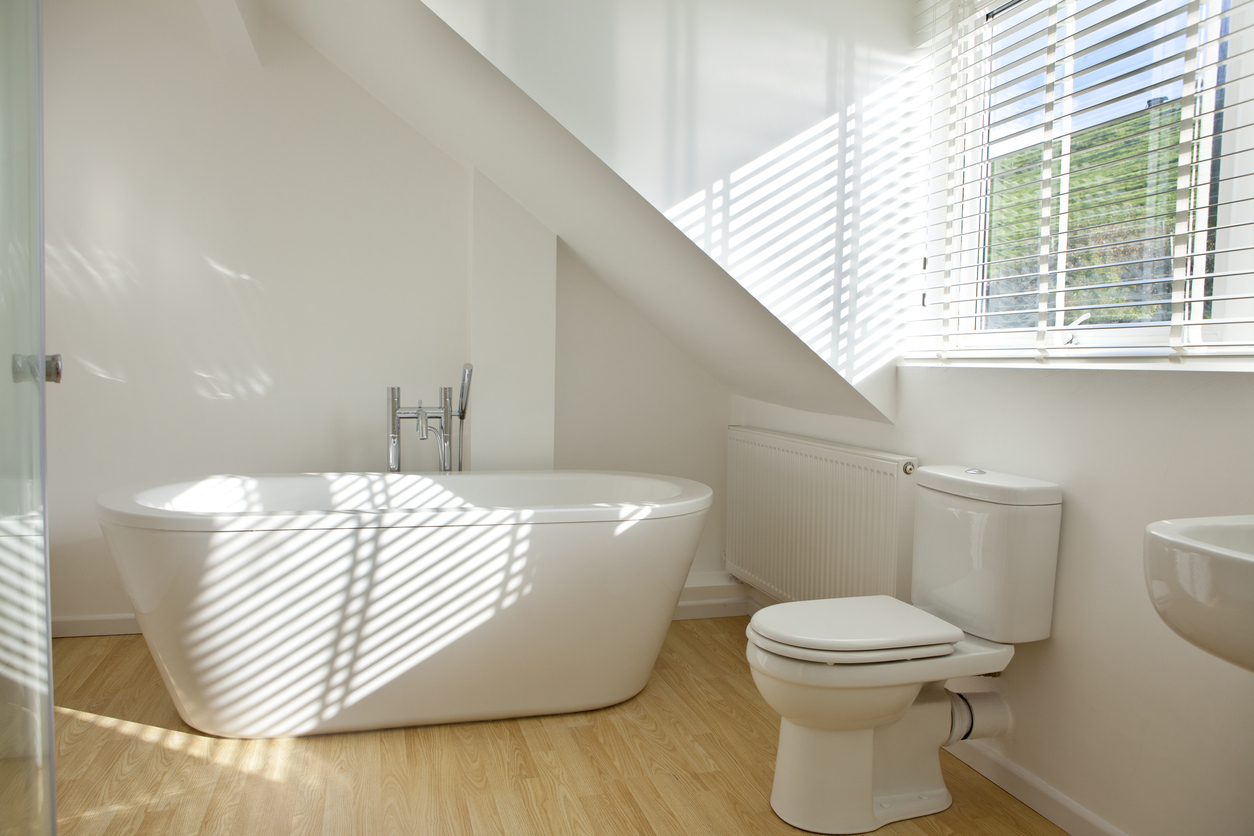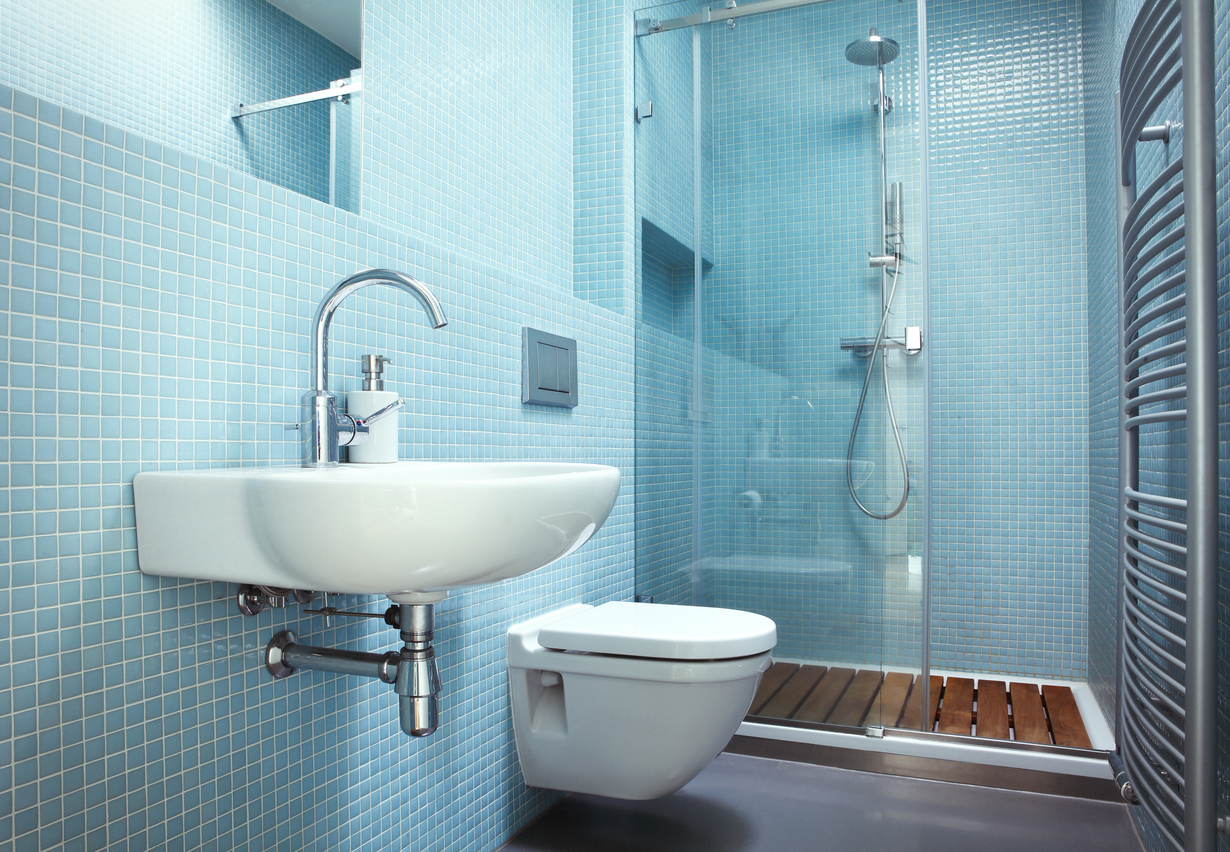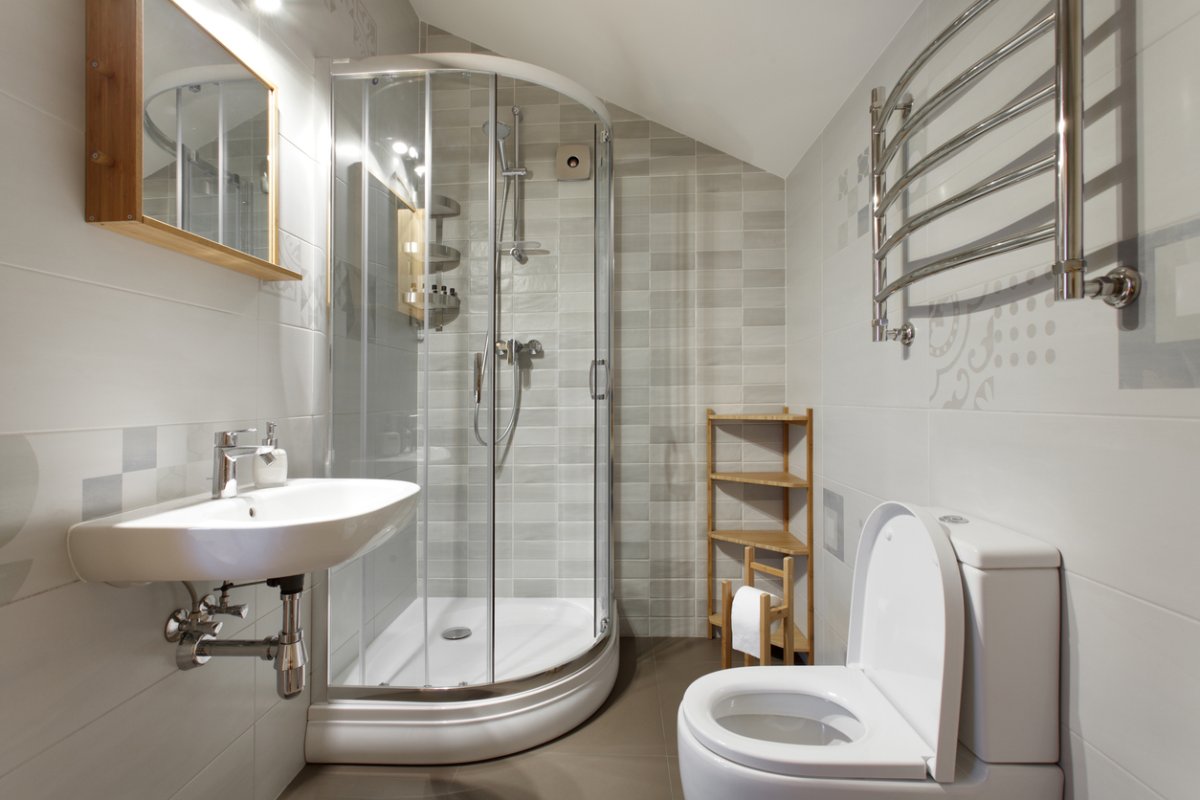We may earn revenue from the products available on this page and participate in affiliate programs. Learn More ›
Q: I’m remodeling my home and choosing between adding a full bath or a 3/4 bath off of the guest bedroom. However, both types of bathroom sound rather similar. What is a 3/4 bath and what are its benefits?
A full bathroom features four key elements: a toilet, sink, shower, and bathtub. A 3/4 bathroom has three of those four elements, including a toilet, a sink, and either a shower or bathtub. 3/4 bathrooms provide all the necessary functionality of a bathroom, but a 3/4 bath’s size is often smaller than a full bathroom, making them a popular choice in many homes.
RELATED: 26 Tiny Bathroom Ideas That Make a Big Impression
A 3/4 bath typically consists of a toilet, sink, and shower.
Most 3/4 bathrooms have a toilet, sink, and a standing shower, although a bathroom with a bathtub and no shower is also considered a 3/4 bath. When it comes to utility, a 3/4 bath serves a similar function to a full bathroom: You can use the toilet, wash your hands in the sink, and clean up in the shower or bathtub. Since most 3/4 baths have a standing shower, they’re only missing the option to soak in the bath.
3/4 baths are a great alternative to a full bath in homes tight on space, while also offering more practicality than a half bath. Since they’re often chosen for their space-saving potential, a bathtub-only bathroom layout is uncommon for a 3/4 bath. However, if you love taking baths, a sizable bathtub may feel more like a necessity than a luxury. And for those with young children or pets that need bathing, a bathtub is often necessary.
A full bathroom usually features four fixtures, and a half bath only two.
A full bathroom has it all: a toilet, sink, shower, and bathtub (either as a separate standing shower and a bathtub, or together as a bath-shower combination). It’s common for houses to have one or two full baths, usually with one attached to the primary bedroom.
A half bath only has two fixtures: a toilet and a sink. Half baths are often placed in areas where easy toilet access is needed but a shower isn’t, such next to a living room or kitchen.
RELATED: The Pros and Cons of Wet Room Bathrooms
3/4 bathrooms are ideal for older children and guests.

A 3/4 bath is a popular choice for guest bathrooms, second bathrooms, and children’s bathrooms. One with a standing shower is an efficient, space-saving bathroom choice that provides everything you need in a smaller package.
However, that’s not to say that 3/4 bathrooms can’t be large or extravagant. Some homeowners also opt for larger 3/4 baths with a spacious shower or soaker tub. 3/4 baths can also be an excellent choice for a primary bathroom for those who are sure they won’t use a tub (or shower); there’s no point in buying, installing, cleaning, and maintaining a fixture that you won’t use. However, keep in mind that having at least one bathtub in a home can improve its resale value, since many homeowners enjoy having the option.
The number and size of bathrooms in a home can play a role in resale, but it comes down to buyer preference.

Having a bathtub in your home can make the house more attractive to potential buyers, as bathtubs can signal value and are useful for families and pet owners. However, having more than one bathtub is more of a luxury than a necessity. Some potential buyers may even prefer a home with more showers than baths, since showers are lower maintenance.
While it’s nice to have at least one tub in the home, there isn’t always a need for secondary bathrooms to be full baths. If you’re building or remodeling a bathroom, you may prefer to opt for a half or 3/4 bath in many situations. Compared to a full bath, a small 3/4 bathroom can save on floorplan space, cost less to install, and be more easily cleaned. Ultimately, a 3/4 bath provides excellent utility and value when done right.
RELATED: Solved! What Is a Water Closet?


